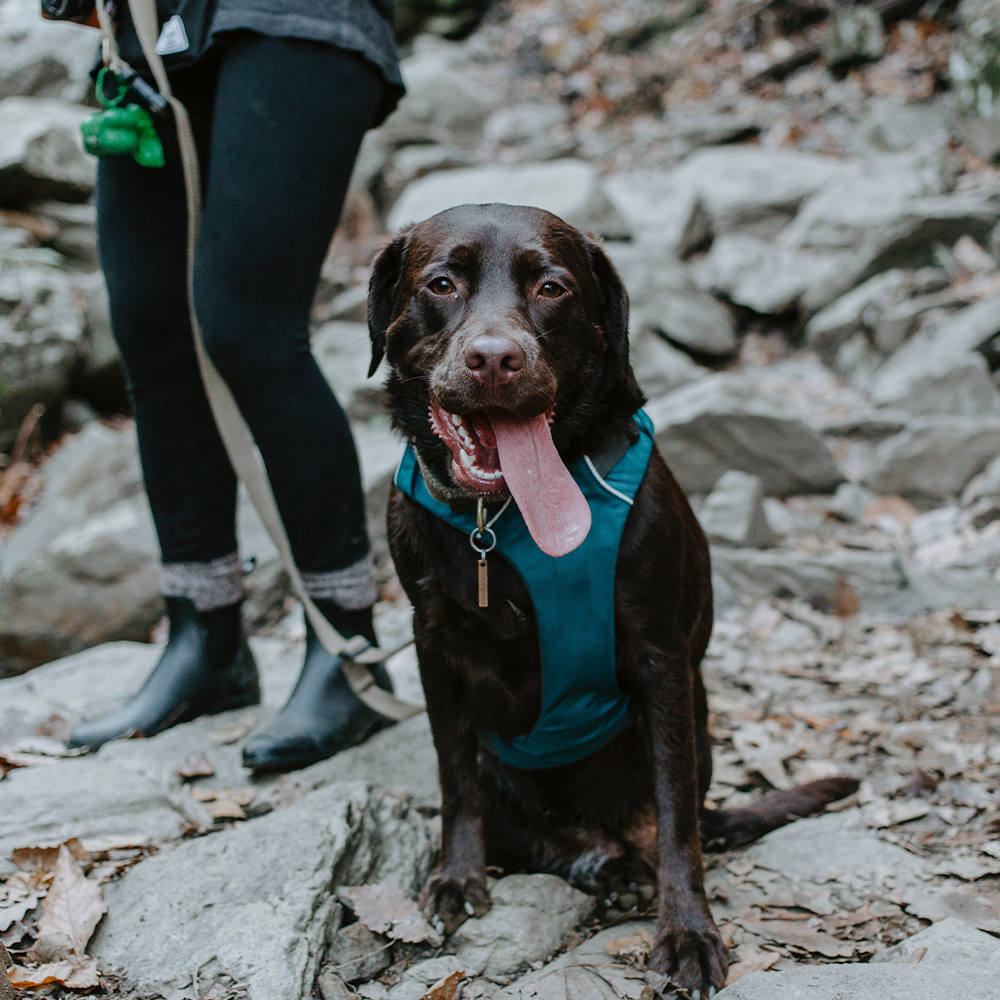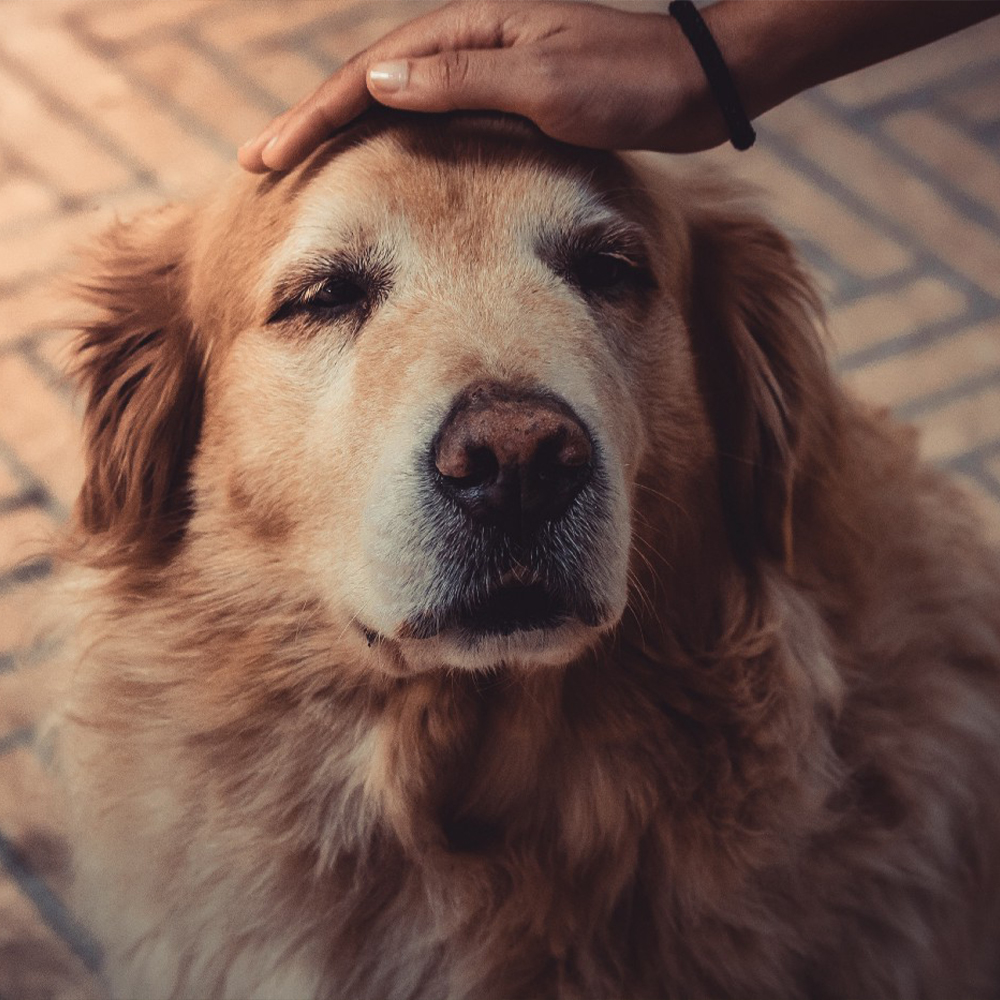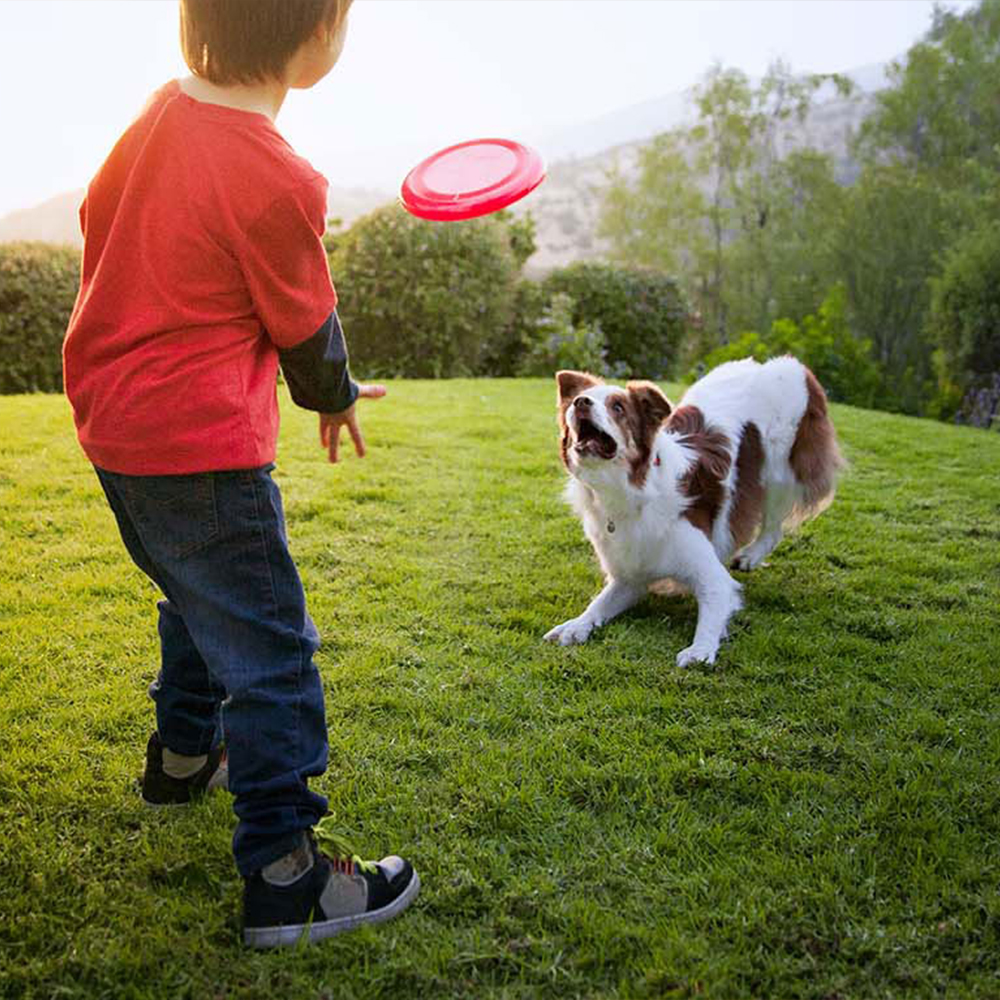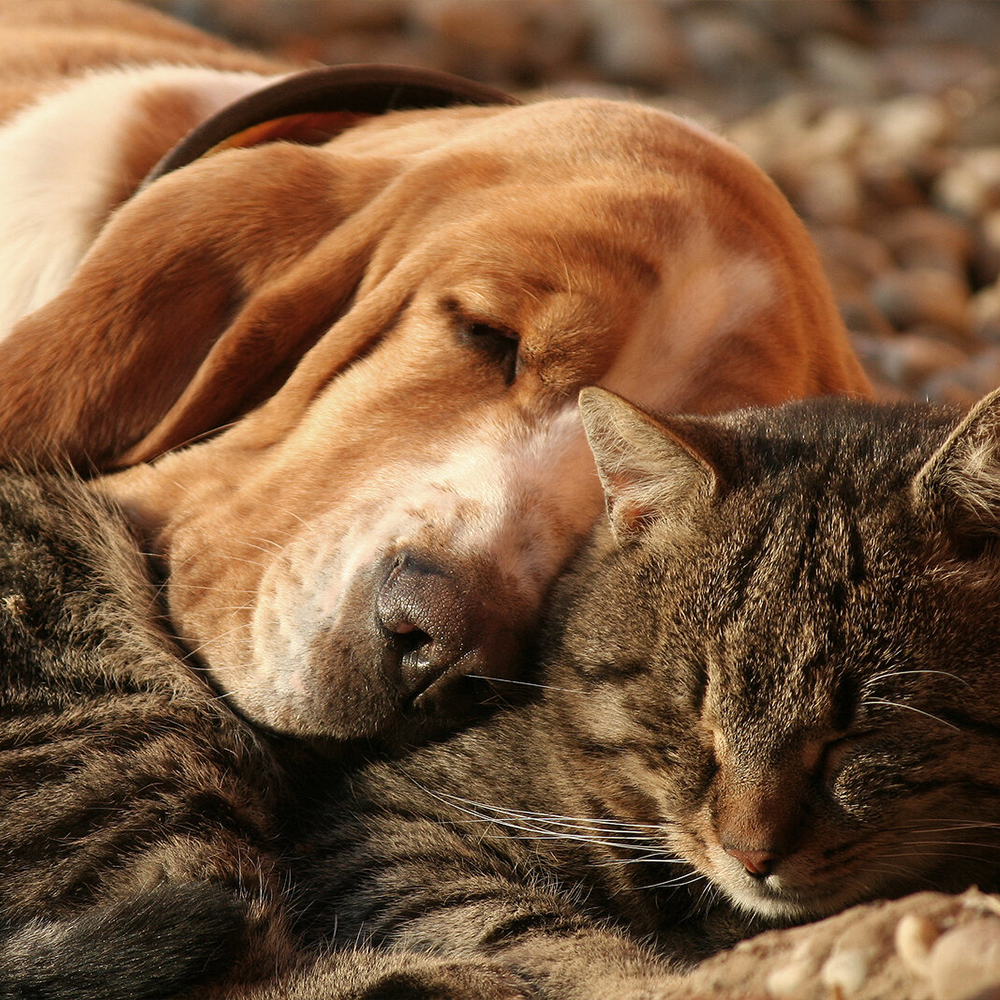
Finding a dog to adopt is no easy task. There are so many things that you have to consider when adopting, like which dog breeds you’re interested in, size, age, energy-level, and what would be best suited for your family’s lifestyle! Here's an in-depth guide of what to consider before choosing your new family member.
There are few things in life more exciting than bringing home a new pet. Dogs, and puppies especially, bring so much joy and love into our lives that they’re sure to energize your entire household.
But before you sign any adoption papers, consider what type of dog or puppy is right for your family. It’s no small decision!
Having a pet is a big responsibility. Before you commit to becoming a pet owner, you should first take the time to research the different dog breeds and narrow down the list to a few that might be a good fit for you and your family.
You must also decide whether to adopt from a rescue, or purchase from a breeder.
Where your dog comes from matters, and it can lead to an entirely different experience for you as a pet owner.
There’s no right or wrong answer here per se, but by educating yourself on all of the significant factors involved in the decision, you can make the best choice for your family which will ultimately lead to the happiest home for you, and your pet.
Raising a puppy versus bringing an older dog into your home requires different degrees of time and commitment from everyone involved, and that includes you, your family, and your pet. The training required will depend on the dog’s age, breed, and it’s past experiences. Training a dog is not a “one-size-fits-all” solution.
Every dog is unique, and there could be other unexpected circumstances in play that affect your future pet. To outline the significant differences and provide you with some information to get you started, we are only speaking in general about how dogs and puppies behave.
Puppies have tons of energy and will require you to be very hands-on in their training, this is especially crucial during their first 16 weeks of life. They’ll be learning everything for the first time, from house-breaking and using a crate, to walking on a leash and being comfortable with guests and other unfamiliar situations.
An older dog who has previously been homed may acclimate faster to living with people again. With any luck, they have been trained with some obedience or have house manners due to their past experiences.
Before making a final decision, consider that there are always more older dogs in need of adoption than younger ones.
Many of these dogs have been previously homed but are no longer with their original owners for any number of reasons. They can make excellent pets and just need a new loving family to give them an opportunity.
If you decide on a puppy, be prepared to handle the time and care commitment, including the late-night and early morning walks, the inevitable accidents, and additional time spent on socializing your dog into your home and world.
If you're not 100% sure that the new canine you've picked is suited for your family, consider fostering before making the commitment to adopt.
Fostering is an extremely vital aspect of dog rescue. It's also a responsible way to determine whether you are ready to add a new puppy to your life and care for it properly. Fostering also keeps dogs out of the shelter, and if you have the right information, you can help a dog transition from shelter to home life with relative ease.
Even if you determine that the dog you foster isn't a good fit for you, they might be ideal for someone who matches their energy level, personality, and can work with any behavior issues (or lack thereof).
Fostering is also a terrific way to determine if the other animals you have in your home will get along with the new addition to your family.
When looking to adopt from a shelter, you’re likely to find dogs of all breeds, sizes, and ages. Over 25% of the dogs in shelters are purebreds, so if you’re looking for a specific breed, it’s likely that you’ll be able to find one if you contact enough shelters.
Getting to know a dog in a shelter environment isn’t easy. Dogs often are uncomfortable in expressing their real personality due to the sheltered lifestyle.
Shelters are typically crowded places, and dogs spend most of the day in their cage. If there’s a dog you’re interested in, ask if you can take them to a larger play area for a meet and greet or even on a short walk together.
Once they’re away from all the other dogs, they may reveal more of themselves, and you can see if there’s any chemistry.
Another consideration is how much space do you have? Do you live in a small apartment or a large house?
It’s no fun to try and house a big dog in a tiny living space. However, depending on the breed, you can make it work! In cities, owners need to take their dogs on frequent walks or trips to public spaces. Wherever you live, dogs must have some freedom to roam and move about in their environments.
The appropriate size of the dog is connected to the size of your space, as well as your dog’s general energy level. Puppies will almost always be more energetic than older dogs who have calmed down over the years.
There may also be the matter of what breeds and other restrictions your landlord or apartment board will allow. You should know what limitations apply before you start meeting dogs and having conversations with shelters and breeders.
Part of being a responsible owner is making sure your home will be a good long term fit for your pet.
It’s no secret that pet-related expenses can add up, so you must know your limits before making an adoption or purchase decision. When purchasing from a breeder, the price-per-pooch can range from several hundred dollars up to the thousands for less common breeds.
When adopting, there are also medical-related costs like vaccinations and spay/neutering to factor into the final price. Many rescue organizations may require a donation to help with their overhead costs.
There are also a few often-overlooked financial factors like the size of a dog when they reach maturity. The larger the dogs, the more food they generally eat, so make sure you’re aware of how those costs will impact your monthly budget.
Every dog is unique and has its own personality, likes, dislikes, and overall temperament. Choosing a dog with a compatible temperament is very important, especially if you are raising the dog around small children. While supervision is recommended with every pet, there are some dog breeds that are known to not be as child-friendly, while others are widely regarded to be better temperamented for families.
Remember, these are just generalizations to be mindful of and not specific recommendations. Dogs of any breed can be a great fit for your home and family—however a Malinois, for example, isn’t going to be the best fit for anyone inexperienced with the breed, or with limited time to work & interact with them. Every breed has their exceptions, but that is why they are called the exception, not the rule.
A temperament test is a series of assessments that evaluates a dog’s behavior in different situations and their reactions to various stimuli. They then are assigned a temperament profile. Most tests take their scores and turn them into profiles like easy-going, independent, fearful, or aggressive. Other tests like the Volhard Puppy Aptitude Test rank dogs with a numerical value 1-6.
This temperament testing process helps dog care professionals understand the animals in their care and works to ensure they’re adopted by an owner that’s well suited to their behavioral type.
Understanding Dog Temperaments And What They Mean For Adoption
As a new-adopter, you should know any potential adoptee’s temperament before you finalize your paperwork.
A dog’s health and personality are much more important than their sex, breed, or size when determining if you can provide them with the right home.
The more informed you are about a dog you’re interested in, the better equipped you will be to make the right call. Even if your shelter or breeder has conducted temperament testing, you should ask if you can spend time with the dog in different environments to see how they react firsthand.
Ask if you can take the dog home for an evaluation. Some shelters will ask you to sign some paperwork and put down a deposit before they allow you to take a dog home.
Not every shelter will agree to this, but if your home is already prepared with doggie-basics for a short-term stay, this can be a massive benefit to you. It will give you the chance to see how a dog’s personality changes in this new environment and allows you to present them with different stimuli.
If taking the dog home for evaluation is not an option, ask if you can spend time together in a meet and greet room at the shelter or on a walk. Observe the dog throughout the process. If they become nervous or resistant when you come close, that’s a warning sign of a fearful temperament.
If you are going to conduct your temperament test, formally or informally, here’s what to look for with each personality type. Compare your findings with what the shelter is telling you, and if anything feels off, ask questions until you are satisfied with the answers.
Quick note, for most of the criteria on any temperament test, an aggressive dog will respond poorly and dangerously. It’s unlikely you’ll find yourself in a situation with an aggressive dog due to the screening shelters do upon intake, but just in case a dog you’re interested in has some aggressive tendencies we’ve included their responses. They’re also a useful comparison to draw to the other major profiles.

If you are allowed to have some alone time with the dog (still supervised, of course), observe how they react when given a chance to focus on you.
Allow them time to get comfortable in the room before trying to engage them.

Test the dog’s response to noises, including your voice. Speak to them in different tones from high-pitched baby talk to normal speaking to a louder than normal voice. Drop your keys on the floor to test their response to a sudden loud sound.

If you believe it safe to do so, cautiously touch the dog in an area they’re most receptive. Make sure to move slowly and not to startle them. Begin by turning to your side and not addressing the dog directly, allowing them to sniff you, and offering them a treat. Slowly begin to pet behind their ears or on their back.

The next test is to attempt to play with the dog by throwing a toy.

If your shelter allows it, take the dog for a short walk. Observe them as you move to put on the leash. While walking together, try to pass other people, cars, bicyclists, and other animals to imitate the typical walk you would go on around your home.
If your dog is pulling on the leash, this isn’t necessarily an indicator of temperament but could be overall inadequate leash training, so don’t worry too much!
Keep in mind, many of these behaviors can be addressed within a training program. It’s not that these dogs are “bad”; they just may not understand what they are doing, or what we want them to be doing. Training is all about communication; developing an understanding of expectations - and leash training is no different.

Allergies are going to be a deciding factor for some families. If a member of your household or extended family has pet allergies, it may limit your options when it comes to breeds. Fortunately, dog allergies are less common than cat allergies, but pet dander can still be an issue.
It’s not necessarily a dog’s fur that causes the allergic reaction but the combination of dried skin cells, proteins, and saliva that gets into the environment when a pet lives among humans.
Consider researching hypo-allergenic dog breeds if allergies are a concern.

Hair length can tie into the allergy conversation, as hair and shedding can aggravate the symptoms of pet dander. But shedding on its own can be bothersome to some people. Long-haired or fluffy dogs typically require more frequent trips to the groomers to keep their coats in top conditions.
Grooming standards for doodle breeds (and other high maintenance breeds) should be kept in mind when you are budgeting for your dog, making sure to allocate time to take them to be professionally groomed routinely.
Some breeds are more prone to being louder than others—think of hounds and hound mixes. Other dogs can just be prone to barking excessively due to genetics. A lot can be resolved with training but on some occasions, some dogs just enjoy barking, howling, and just making noise in general. Some breeds, like Huskies, have a lot to say and need to say it loudly and often.
Do you have adequate outside space to let your dog sound off? Also, we recommend you consider your neighbors and how a loud pet might affect their quality of life and your neighborly relationships. Be considerate!
If this isn’t your first 4-legged pet, consider how you’ll handle compatibility issues between your new puppy and your long-time pet’s personalities. Plenty of dogs and cats share homes and get along or even become close friends. Read up on each breed’s compatibility and what experts recommend when sharing a home with other animals.
Bringing home a new puppy is an exciting experience for both owner and dog. It takes time for your dog to adjust to being at home with you. Learn what's normal in the decompression process and how you can support your pup.

After a long search, interviews, tons of internet research, and asking friends and dog professionals for advice, you’ve finally found the rescue dog of your dreams! All you have left to do is sign the adoption papers and bring them home.
But you may be wondering, now what? What happens now that you’re a proud adoptive dog parent?
When shelter dogs are adjusting to life in a new home, we like to observe what’s known as the Rule of 3’s to track how they’re doing with the transition.
The 3’s are the first 3 days, the first 3 weeks, and the first 3 months.
The first 3 days are considered the “detox period.” This is a major transition for your rescue. The home environment is entirely different from their life in the shelter. It’s going to be much more welcoming, warm, and exciting for them.
At 3 weeks, your dog’s true personality starts to emerge. This may be when you first begin to notice behavioral issues. Many of these can be resolved with regular dog training, but if there are signs of deeper issues, it’s best to begin working with a professional trainer around this time to address them.
After 3 months, you and your dog are on the path to being lifelong besties. They should be fully comfortable in your home, their new routines, and leaving shelter life behind as a distant memory.
We’ll break down what to expect at each stage and make sure your dog’s adjustment period goes as smoothly as possible.
But before you welcome your new friend into your life, there are a few things you need to make sure you’ve taken care of, like dog/puppy proofing your home, buying supplies, and planning out your dog’s daily routines.
We’ll walk you through all of that too, so you can ensure your dog has a great experience coming into your life and home.

Before you bring your new dog home, make sure you’ve done a thorough job dog/puppy-proofing your space.
If you have young children and have already baby-proofed your space, you’re ahead of the game. You might find it’s a very similar process for our favorite companions.
Even for older dogs who’ve lived in homes before, it isn’t easy to know how they will adapt to a new environment or if they have had adequate training beforehand.
It’s best to be 100% sure you’re ready for business, so go through each room in your home and run through this checklist:
Pick up any small objects that could become the targets of opportunity for a dog to chew on or swallow. This means shoes, children’s toys, books, etc. Veterinarians report that their most frequent surgery is removing objects from a dog’s insides, so if you have things small enough to swallow on the ground or low standing tables, it’s best to tidy them up.
Hide any electrical wires hanging out in the open that a dog might get tangled in or be enticed to nibble.
Some houseplants are poisonous to dogs, so it’s a good idea to keep any hanging stems/vines out of harm’s way.

Set up your dog’s crate in a quiet space aside from your bedroom. Some new owners don't like the idea of keeping their dog in a kennel, but a modern crate helps to create an environment that provides your dog with a safe place to retreat to when necessary. Locking the crate at night works to give your dog structure and discipline, which they need to balance out their new freedom.
There is a right way and wrong way to use the crate, and we’ll get into more in-depth detail in the next blog in this series. To get started, look into the recommendations for your specific breed and determine what size crate would be appropriate. Many models can be adjusted in size as your dog grows too.
Remember, a crate is meant to be a positive place for your dog. You never want your dog to view the crate as anything but their own little safe space.
Be ready with other necessary pet supplies like food and water bowls, leashes, poop bags, and of course, plenty of toys to play with and chew on.
Ok, so now you’re all set up, and it’s finally time to bring your dog home!
As mentioned above, these initial days are a “detox period.” Shelter life is tough for dogs. They don’t get the level of care and attention they do when placed with a family. It’s a big transition for them, and they’re going to need your support.
They’ll have tons more freedom to explore and new people to form relationships with. Compared to shelter life, they’ll be able to play and romp around as much as they want!
It’s an incredible time of joy for you and your first real chance to bond with your dog as a member of your family.
However, understand that this time can also be overwhelming for your dog. The introduction of new people, stimuli, and routines can be too much for them, especially if your dog had an extended stay at the shelter and became used to that way of living.
It’s not uncommon for a dog to have irregular sleep habits during the first few days in your home. Some dogs may take frequent naps, and others might be balls of energy and unable to settle down. Others might have issues with their appetite and will be hesitant to eat or drink at mealtimes. They may get skittish and hide in their crate or under furniture. Some will have anxiety-related diarrhea or vomiting.
These behaviors are all completely normal and not necessarily a sign of deeper behavioral problems. For digestion-related issues, a probiotic may be helpful, but consult your veterinarian for recommendations. We also recommend feeding pureed pumpkin or slippery elm as these can help soothe the majority of digestive related issues. On all things medically-related, your vet should always have the last word.
Having a crate set up in a quiet area can give them that safe space to retreat to, if needed. Some owners like to place a blanket on top of the crate to block some light and make it feel more like a den. Cozy blankets inside a crate also provide additional comfort, as do chew toys and stuffed friends. Allow your dog to access this area during the day by leaving the crate door open for them to come and go as they please.
Don’t worry if your dog is spending a lot of time alone during these first few days, don’t push them to socialize with you if they’re not ready. If your dog is hesitant, take a slower approach to introducing more elements of your home and family. Keep them from entering certain rooms and introduce them to new locations one at a time. You can also do the same with family members, so they have time to get to know each person individually.
Being prepared with a daily routine for your dog will go a long way to establishing a structure for them to adapt to.
Have a daily plan for you and your dog covering wake-up times, meals, and scheduled walks. Of course, additional potty breaks may be required, but as you learn each other’s internal clocks, creating some scheduled times to relieve themselves begins to set a rhythm for your dog’s life.
You don’t want to fall into the habit of them being able to interrupt your schedule for theirs.
If your dog is initially disinterested in their food, that is okay! Dogs will choose to eat when they are hungry. If your dog chooses not to eat within the first ten minutes or so, pick the food bowl up and try again at another meal time. They will come around soon enough! Free-feeding or letting a dog graze takes away a lot of our ability to engage and connect with them, not to mention; it is the leading cause of resource guarding issues & canine obesity.
Also, set aside some time for training on basic commands with their meals, as opposed to treats. This only needs to be 5 minutes or so to work on “sit” or “come” commands.
Additionally, be sure to give yourself and others in your family some time off from doggie care. This is for your benefit as well as your dog’s. Dogs need time to learn how to be alone in your space and to entertain themselves as well. It’s good for your dog’s sense of independence and is an integral part of their transition.
If you have to leave for work, do your best not to make a big deal of saying goodbye or hello immediately when you return. You want your dog to experience your comings and goings as no big deal and just a fact of life. Dogs prone to separation anxiety tend to get nervous when their owners leave their presence, and we want to avoid triggering any in your pet.
If your dog gets overly-excited when you return home, you don’t want to return their energy at that moment! It can be hard when they’re extra adorable, but you don’t want to reinforce this behavior as it can lead to issues down the line with separation anxiety or even jumping on you or guests when they arrive.
Be ready to reward them frequently for following any aspect of your home routine. After training sessions and walks are great times to reward your dog with affection and some play time.
The first 3 days are a critical time for you and your pet, so follow this advice and you should be off to a smooth start.
Kids
If you have children, they’re going to be over the moon with excitement about the new family pet. If you grew up with a dog of your own, you can probably relate. Kids and dogs can form some of the closest bonds as they get to grow up together and explore the world.
However, children have to be taught boundaries for their new friends and how to be safe when interacting with them. Most dogs won’t bite without giving several warnings, and some of their warning signs are subtle, so be sure your children know what to do if they encounter a situation where your dog gets too intense for them.
Make sure they understand that a dog is a living being and not a stuffed animal. They should never hit, pinch, or try to climb on your dog, no matter the size difference between dogs and children — even if it looks like a cute photo opportunity.
Always supervise your children when they’re playing with your dog until they’re mature enough to be more responsible. Dogs are an excellent way to teach kids how to be responsible for themselves and others as well. However, it is important to understand that as the parent, you will be the primary source of care for your dog’s needs and will need to advocate for them, especially in the beginning.
It’s a good practice to introduce your children to the dog before you bring them home, so they’ve already made a first impression. When you bring the dog into the house, they’ll be seeing a familiar face again.
A few other pointers for child-dog harmony:
Other Pets
When introducing an additional pet into your home, it is a bit of a different process than when you had an emptier nest.
It’s a good practice to introduce your dogs to one another outside of your home first, preferably while walking together. When dogs interact at a distance in a neutral environment it’s less likely to trigger anxiety or territorial behavior. Walking together also emphasizes their relationship as members of the same pack.
Getting to know one another can take time and should never be rushed. Like when establishing a potential new friendship with someone, as adults, it is very rare to meet someone that you clique with immediately, especially in a way that you feel that you’ve known each other forever!
A slower introduction is best, and it’s ok to crate your new pup while your long-time dog is allowed to roam free like they usually do. Don’t change your older pet’s routine because of your new one. You may just have to pull double duty for a while until both pet’s schedules have synced up.
Blending dogs into a family takes time. If you’re able to ease into direct interactions over time, (as some dogs need distance to become comfortable at first), make sure they respect one another’s boundaries. Also, supervise play when they start to become comfortable with one another, and you’ll reap the rewards.
While some dogs may not necessarily become best friends, you want them to at least get along without any issues.
If your other pet isn’t a dog, a lot of these same rules will still apply. If it’s an animal that remains in a cage or enclosed space, make sure your dog cannot harm them or interfere with their business.
At the 3-week mark, your dog is hopefully getting used to the routines you’ve set up for them for eating, sleeping, training, and potty time.
Now is when more of their real personality should start emerging.
This is also the time when behavioral problems will start making themselves known. Many minor behavior problems can be sorted out with some basic balanced obedience training. Still, if they’re showing signs of deeper issues, it’s best to consult with a professional for some more one on one assistance.
You should begin a more formal training process here and be clear on what boundaries you’ve set out for them. Do you want to allow them on the furniture? Will they keep sleeping in their crate or a doggie bed? Will you allow them unsupervised outdoors time? These are a few suggestions of home rules for you to think about.
After 3 months, this is when dogs have a real sense that they’re at “home” and not just on a fun adventure with a cool and caring human. You may still be dealing with some behavior issues, but you should have a training plan and support from a professional at this point. If not, be sure to correct that immediately.
What’s next?
Keep getting to know your dog and share your life with them. Just like any other member of the family, make sure you take the time to create special memories and take pictures too.